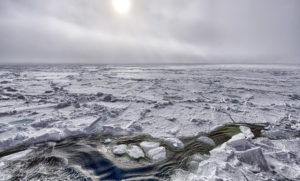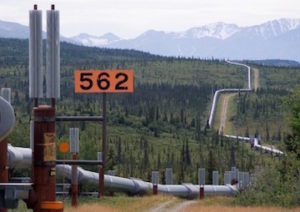Sun Sheds Light on Arctic Carbon Puzzle
Scientists discover that, as the Arctic continues to warm, sunlight will be the major cause of CO2 escaping into the atmosphere from vegetation preserved in frozen soil.
By Tim Radford, Climate News NetworkThis piece first appeared at Climate News Network.
LONDON — One of the puzzles of the permafrost has been solved by scientists in the US. The key to the carbon cycle in the Arctic north is not the microbe population — it’s the sunlight.
Such a discovery is not, strictly speaking, concerned with climate change, but with the more detailed question of how the world works – specifically, how the carbon that was once plant material gets back into the atmosphere.
However, since the Arctic permafrost is home to half of all the organic carbon trapped in the soils of the entire Earth, the finding is ominous.
The Arctic is one of the fastest warming regions on the planet. As it warms, more and more carbon dioxide is likely to escape from the half-decayed tundra vegetation preserved in the frozen soil and will find its way into the atmosphere, to accelerate still further warming.
For the moment, the study is another piece fitted into place in a wider understanding of the carbon cycle.
Organic carbon
Rose Cory, of the University of Michigan, US, reports with colleagues, in the journal Science, that they measured the speeds at which bacteria and sunlight converted dissolved organic carbon in the lakes and rivers of Alaska.
In the standard domestic garden compost heap, the hard work of turning such things as decaying cabbage stalks, potato peelings and grass cuttings back into carbon dioxide and methane is performed by microbes.
But visible and ultraviolet light beams also pack a punch. They too can oxidise organic carbon and turn it back into gas molecules.
In 2013, Dr Cory and colleagues established that levels of dissolved organic carbon in a region that was once permanently frozen were rising, giving microbes and other conversion processes a chance to get to work.
The researchers took samples of flowing and still water from 135 lakes and 73 rivers on Alaska’s North Slope over a three-year period, and then incubated them under differing conditions of light.
More efficient
They found that sunlight was 19 times more efficient than microbes at processing the carbon, and could account for between 70% and 95% of all the carbon released from Alaskan water.
“We’re likely to see more carbon dioxide released from thawing permafrost than people had previously believed,” Dr Cory said. “We are able to say that because we now know that sunlight plays a key role and that carbon released from thawing permafrost is readily converted to carbon dioxide once it is exposed to sunlight.”
Microbes are less efficient in low temperatures. And the sunlight works more efficiently because it can directly degrade the dissolved organic carbon, and can also convert it into a condition that makes it more accessible for the microbes.
“This is because most of the fresh water in the Arctic is shallow, meaning sunlight can reach the bottom of any river – and most lakes – so that no dissolved organic carbon is kept in the dark,” said Byron Crump, a microbial ecologist at Oregon State University, and a co-author of the report. “Also there is little shading of rivers and lakes in the Arctic because there are no trees.”
Your support matters…Independent journalism is under threat and overshadowed by heavily funded mainstream media.
You can help level the playing field. Become a member.
Your tax-deductible contribution keeps us digging beneath the headlines to give you thought-provoking, investigative reporting and analysis that unearths what's really happening- without compromise.
Give today to support our courageous, independent journalists.






You need to be a supporter to comment.
There are currently no responses to this article.
Be the first to respond.